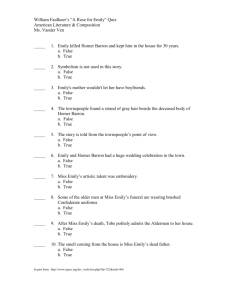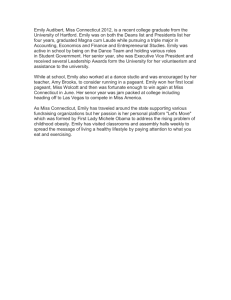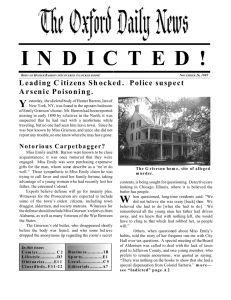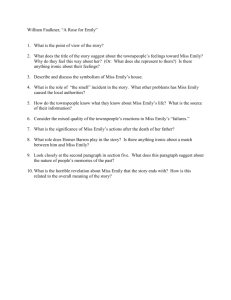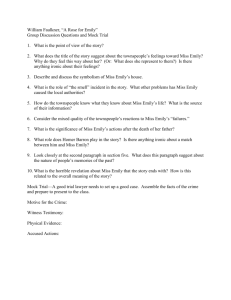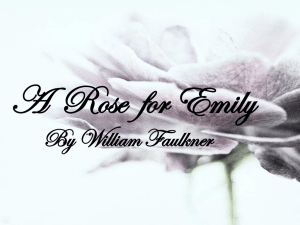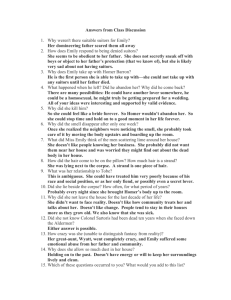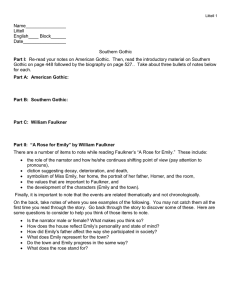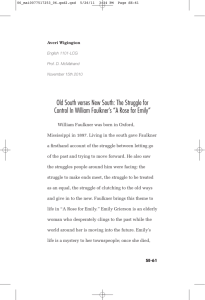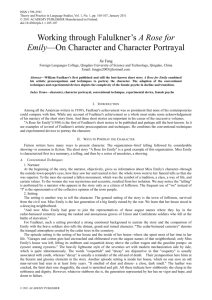William Faulkner`s “A Rose for Emily” Questions
advertisement
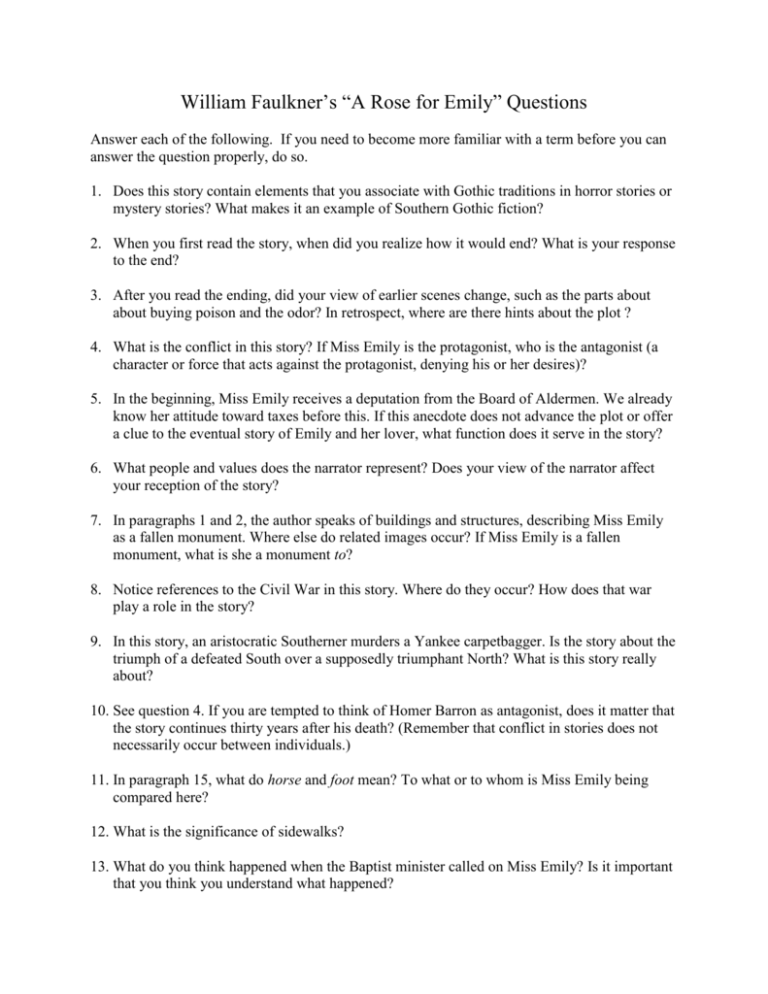
William Faulkner’s “A Rose for Emily” Questions Answer each of the following. If you need to become more familiar with a term before you can answer the question properly, do so. 1. Does this story contain elements that you associate with Gothic traditions in horror stories or mystery stories? What makes it an example of Southern Gothic fiction? 2. When you first read the story, when did you realize how it would end? What is your response to the end? 3. After you read the ending, did your view of earlier scenes change, such as the parts about about buying poison and the odor? In retrospect, where are there hints about the plot ? 4. What is the conflict in this story? If Miss Emily is the protagonist, who is the antagonist (a character or force that acts against the protagonist, denying his or her desires)? 5. In the beginning, Miss Emily receives a deputation from the Board of Aldermen. We already know her attitude toward taxes before this. If this anecdote does not advance the plot or offer a clue to the eventual story of Emily and her lover, what function does it serve in the story? 6. What people and values does the narrator represent? Does your view of the narrator affect your reception of the story? 7. In paragraphs 1 and 2, the author speaks of buildings and structures, describing Miss Emily as a fallen monument. Where else do related images occur? If Miss Emily is a fallen monument, what is she a monument to? 8. Notice references to the Civil War in this story. Where do they occur? How does that war play a role in the story? 9. In this story, an aristocratic Southerner murders a Yankee carpetbagger. Is the story about the triumph of a defeated South over a supposedly triumphant North? What is this story really about? 10. See question 4. If you are tempted to think of Homer Barron as antagonist, does it matter that the story continues thirty years after his death? (Remember that conflict in stories does not necessarily occur between individuals.) 11. In paragraph 15, what do horse and foot mean? To what or to whom is Miss Emily being compared here? 12. What is the significance of sidewalks? 13. What do you think happened when the Baptist minister called on Miss Emily? Is it important that you think you understand what happened? 14. Why are we not surprised when Homer disappears? How does the storyteller ensure that we are not surprised? 15. After reading, reconstruct the sequence of events. When did Homer Barron die? How did he die? Why is the story structured in the way that it is? 16. It has been said of this story that "Miss Emily has a shadow, and by this shadow we tell the time of her life." What is her shadow? 17. Why do we need to know about Miss Emily's hair changing color? 18. Had Miss Emily really shut up the top floor of her house? Why does the narrator say "evidently"? 19. What purpose is served by telling us that the Negro "walked right through the house and out the back and was not seen again"? 20. Toward the end is a lyrical and metaphorical account of the old people's sense of the past, a poetic kind of prose with which a self-indulgent author will sometimes pad out a story or tease us by delaying the resolution of our suspense. What is Faulkner doing here? Playing a trick on us? Does this image present an alternative or parallel to anything else in the story? 21. Why did they wait until after the funeral to open the closed room? What word in the story informs you about the reasons for this delay? Is the delay consistent with the world of this story? Questions from Dr. Tina L. Hanlon, Ferrum College (she says “written and adapted from various sources”) <http://www.ferrum.edu/thanlon/StudyQ/Awake.htm>

